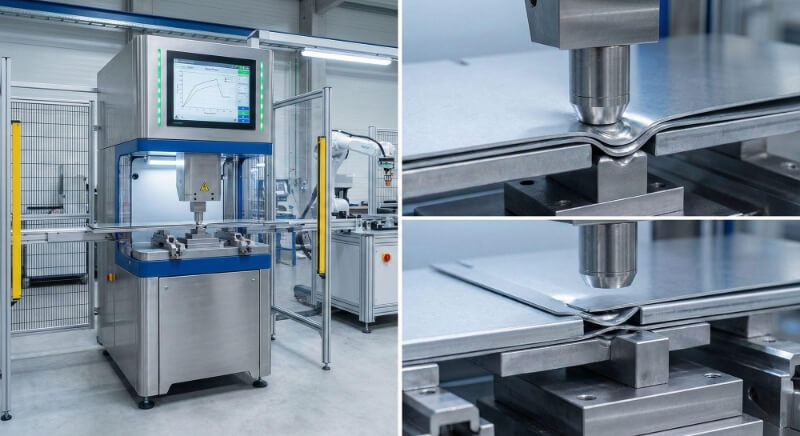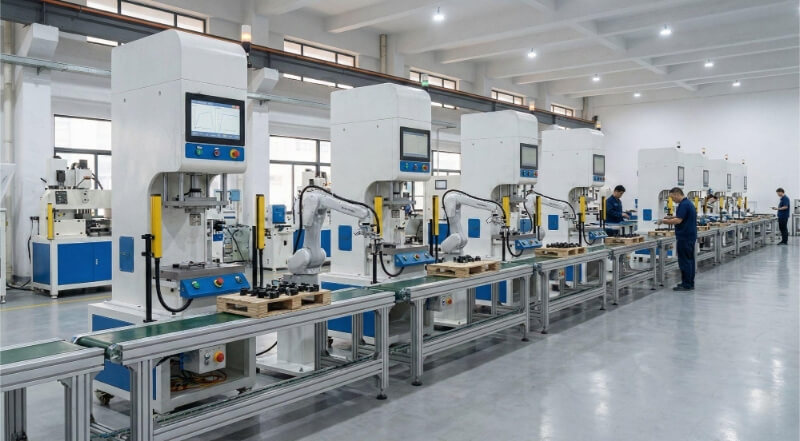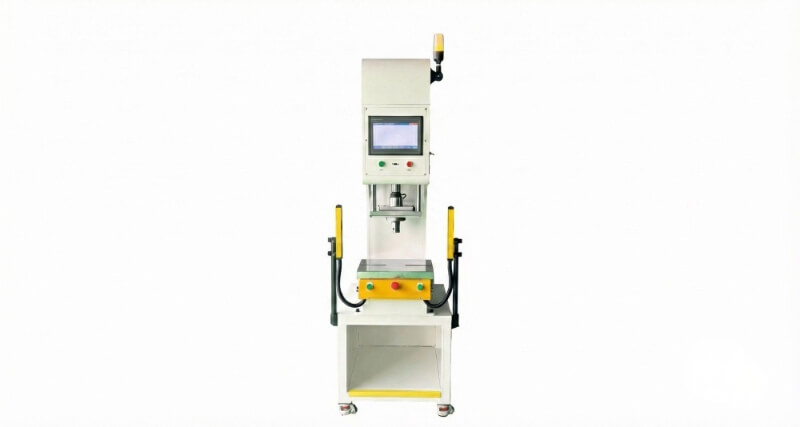製造エンジニアは、機械部品に使用する鋼種を選択する際にしばしば助けを必要とします。ASTM A108鋼種は、多くの用途に理想的な特定の利点を提供します。この中炭素鋼種は、優れた機械加工性、一貫した品質、そして様々な製造工程における費用対効果を実現します。
ASTM A108は中炭素鋼です。強度と優れた被削性を兼ね備え、自動車部品、機械部品、精密機器に最適です。この規格には1010から1095までの複数の鋼種があり、それぞれ炭素含有量と機械的性質が異なります。
なぜASTM A108鋼板がお客様の次の製造プロジェクトに最適なのでしょうか?その特性、用途、加工特性について詳しく見ていきましょう。
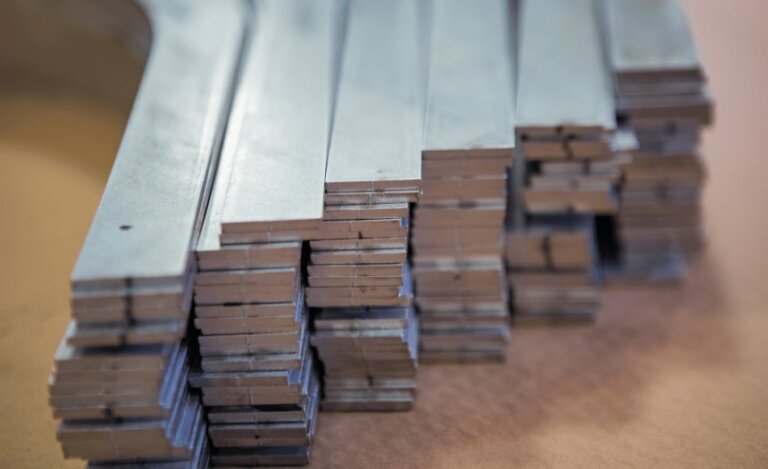
ASTM A108鋼とは?
ASTM A108は、冷間および熱間仕上げ炭素鋼材を対象とする標準規格です。この規格には様々な鋼種があり、1010から1095までの4桁の番号で識別されます。例えば1045は約0.45%の炭素を含みます。
ASTM A108鋼の組成と特性
製造工程では、一貫した信頼性の高い特性を持つ材料が要求されます。ASTM A108鋼材は、注意深く管理された組成と加工により、これらの要求を満たしています。各鋼種は、異なる用途に適した特定の性能特性を提供します。
ASTM A108鋼の化学成分
化学組成は、この鋼材が製造および最終用途でどのように機能するかを定義します。ASTM A108には炭素レベルの異なる複数の鋼種があり、それぞれが特定の製造ニーズに合わせて精密に配合されています。
主要な化学元素:
- カーボンだ: 0.10%~0.95%(グレードにより異なる)
- マンガンだ: 0.30%~1.00%
- リンだ: 0.040%最大
- 硫黄だ: 0.050%最大
- シリコンだ: 0.15%~0.35%
ASTM A108鋼の物理的性質
物理的特性は、製造工程における材料の挙動に影響します。これらの特性は製造工程全体にわたって一貫しているため、品質管理の維持に役立ちます。
典型的な物理的性質:
- 密度が高い: 7.85 g/cm³
- 熱伝導率: 54 W/m-K
- 電気抵抗率: 1.43 x 10^-7 Ω-m
- 比熱容量: 486 J/kg-K
機械的特性:強度、硬度、延性
機械的特性は、耐荷重と加工挙動を決定する。これらの値は、特定の鋼種と熱処理条件によって異なります。
一般的な範囲:
- 抗張力: 380-900 MPa
- 降伏強度: 205-700 MPa
- 伸長: 10-28%
- 硬度: 85-269 BHN
ASTM A108鋼の性能に及ぼす合金元素の影響
異なる合金元素は鋼の特定の特性を強化する。各成分は、望ましい性能特性を達成するために明確な役割を果たします。
主な合金元素の影響:
- カーボンだ: 硬度と強度をコントロール
- マンガンだ: 焼入れ性の向上
- シリコンだ: 脱酸と強度を高める
- 硫黄だ: 機械加工性の向上
- リンだ: 強度と耐食性を高める
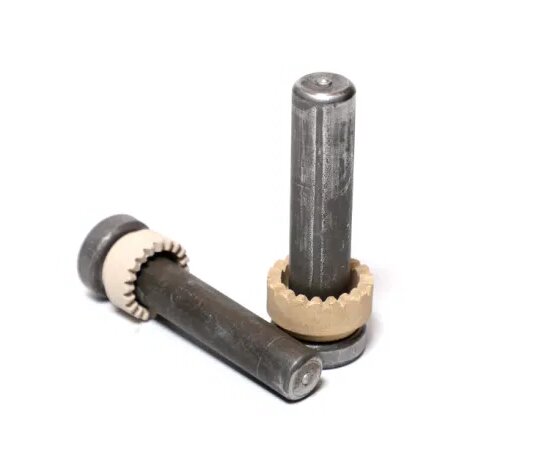
ASTM A108鋼の製造と生産
製造工程は、A108鋼の最終特性に直接影響します。冷間引抜き、熱間圧延、圧延の3つの方法がこの材料の特性を形成します。 熱処理.ASTMの仕様に適合させるには、各工程で正確な管理が必要です。
プロセスの概要:冷間引抜と熱間圧延 ASTM A108
冷間引抜は、熱間圧延された棒鋼を室温でダイスに通すことから始まる。この工程により、直径が小さくなり、表面仕上げが改善され、強度が増す。その結果、公差が厳しくなり、機械加工性が向上します。
熱間圧延は再結晶温度以上で行われ、通常 1700°F前後である。この方法では、より大きな断面が成形され、より均一な結晶粒組織が形成されます。表面仕上げは冷間圧延よりも粗くなりますが、熱間圧延されたA108は良好な成形性を示します。
ASTM A108鋼の加工と成形方法
原料の準備は入念な化学的管理から始まる。工場では以下の工程を経て鋼材を加工します:
- 目標組成を達成するための溶解と精製
- ビレットまたは棒鋼への初期成形
- スケールを除去する表面調整
- 絞りまたは圧延によるサイズ縮小
- 矯正とストレス解消
特性向上における熱処理の役割
熱処理はA108のミクロ組織を変化させる。このプロセスには以下が含まれる:
- 1600~1700°Fで焼ならし、結晶粒組織を微細化する。
- 機械加工性を向上させるアニール
- 寒い仕事の後のストレス解消
- 高強度化のための焼き入れ・焼き戻しオプション
ASTM A108 鋼種
A108の鋼種は、特定の製造ニーズに対応するさまざまな選択肢を提供します。各鋼種は、機械的特性、機械加工性、およびコスト要因のバランスをとり、用途の要件に適合します。
標準グレードとその用途
グレード1018 最も一般的な材種で、加工性と溶接性に優れる。
- カーボンだ: 0.15-0.20%
- 汎用部品に最適
- シャフト、ピン、スペーサーに使用
グレード1045:高強度オプション
- カーボンだ: 0.43-0.50%
- 動力伝達部品に適合
- 機械部品で一般的
グレード12L14: 優れた加工性
- 鉛の添加でチップ形成が改善
- 大量生産に最適
- ナット、ボルト、フィッティングに最適
利用可能なフォームとサイズ
標準在庫形状は以下の通り:
- 丸棒: 直径0.25~6
- 六角棒: 0.25″~3″のフラット
- 角棒: 片側0.25~4インチ
冷間仕上げ公差オプション:
- スタンダード: ±0.002″から±0.005″まで
- 精度: ±0.0005″〜±0.001
- グラウンド 最大±0.0002
ASTM A108鋼の長所と短所
A108鋼について十分な情報に基づいた決定を下すには、その長所と限界を明確に理解する必要があります。ここでは、材料選択に影響を与える主な要因を検証してみましょう。
メリット
まず費用対効果が目立つ:
- 合金鋼より低い材料費
- 加工時間と工具の摩耗を低減
- 複数のサプライヤーから幅広く入手可能
生産面でのメリットは以下の通り:
- バッチ間で一貫した加工性
- 冷間引抜後の表面仕上げが良好
- 一般的な熱処理によく反応する
設計の柔軟性
デメリット
パフォーマンスの限界はある:
- 合金鋼より強度が低い
- 硬度能力の低下
- 耐食性が低い
アプリケーションの制約は以下の通り:
- 高温での使用には適さない
- 耐摩耗性に限界がある
- 表面処理が必要な場合がある
考慮すべきコスト要因:
- 追加の治療が必要な場合もある。
- 表面保護コスト
- 熱処理費用
ASTM A108鋼の一般的な用途
ASTM A108鋼は、その多様な特性と安定した品質により、様々な産業で使用されています。各業界では、固有の要件を満たすために、この材料の特定の特性を活用しています。
自動車製造におけるASTM A108
主な自動車部品は以下の通り:
- ドライブシャフトとアクスル
- ステアリング・コンポーネント
- ブレーキシステム部品
- エンジン・コネクティングロッド
- トランスミッションギア
これらの部品は、厳しい公差と信頼できる強度レベルが要求されます。A108の安定した加工性は、高い生産率を維持するのに役立ちます。
航空宇宙産業での使用
航空宇宙分野への応用が注目されている:
- 地上支援機材
- 非重要構造部品
- メンテナンスツール
- 組み立て備品
- 試験装置
この素材の予測可能な特性は、精密製造のニーズをサポートする。
建設および構造エンジニアリング分野での用途
建設用途が中心:
- アンカーボルト
- タイロッド
- サポートブラケット
- ハードウェア・コンポーネント
- マウントシステム
産業機械および装置への使用
機械メーカーがA108を選ぶ理由
- ギアシャフト
- スピンドル
- ブッシング
- ローラー
- ガイドピン
これらの用途では、優れた耐摩耗性と寸法安定性が利点となる。
精密部品とファスナーにおける役割
ファスナー アプリケーションを含む:
- 高強度ボルト
- スタッズ
- ナッツ
- ワッシャー
- ピン
この材料の優れたねじ切り特性と強度は、ファスナー製造に理想的である。
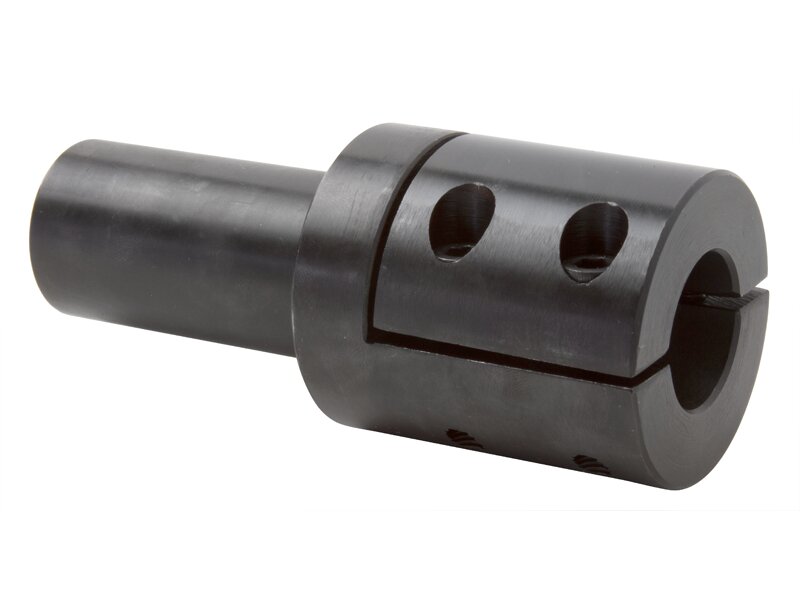
ASTM A108鋼を使用する際のベストプラクティス
材料の加工技術は製品の品質と生産効率に影響します。ASTM A108鋼を成功させるには、適切な方法とパラメータに注意する必要があります。実績のある手法に従うことで、無駄を省き、成果を向上させることができます。
切断、加工、成形技術
適切な切断は、速度と送りの選択から始まる。中炭素鋼種は、毎分300~400サーフェスフィートの速度で加工するのが最適です。鋭利な工具と適切なクーラントの流れは、加工中の加工硬化を防ぎます。
旋削加工で最適な結果が得られるよう、1パスあたりの切削深さを0.010~0.020インチに保っている。超硬工具はほとんどの用途に適しており、高速度鋼工具は断続切削に適しています。
冷間成形では、材料の状態に細心の注意を払う必要がある。成形前の応力除去により スプリングバック 問題点段階的な成形によりひずみを均等に分散し、ひび割れのリスクを低減。
ASTM A108 鋼部品の溶接と接合
溶接の成功は、適切な材料準備から始まる。清浄な表面と適切な予熱温度は、溶接の 欠陥を防ぐ。低炭素鋼種は、高炭素鋼種よりも溶接しやす い。
300-500°Fまで予熱することで、中・高 炭素鋼種の割れリスクを低減。低水素電極は、低温割れの可能性を最小限に 抑える。溶接後の徐冷は、特性を損なうことなく応力除去を可能にする。
溶接後の熱処理は、接合部の信頼性を向上させます。1100~1200°Fでの応力除去は残留応力を低減する。冷却速度を監視し、望ましい機械的特性を維持する。
最大強度のための最適熱処理の確保
熱処理の成功は、正確な温度管理にかかっている。適切なオーステナイト化温度は炭素含有量によって異なる。焼入れ媒体の選択は、最終的な特性と歪みの制御に影響します。
中炭素鋼種は油焼入れに適している。水焼入れは低炭素鋼種に適するが、歪みリスクが高まる。焼戻し温度は400~1200°Fで、強度と靭性の要求バランスがとれている。
ASTM A108鋼を選択する際の主な考慮事項
材料の選択は、製造効率、製品性能、プロジェクトコストに直接影響します。A108鋼が特定の用途要件を満たすかどうかを判断するための重要な決定ポイントを分析しましょう。
材料選択に影響する要因
パフォーマンス要件:
- 静的および動的負荷条件(引張、圧縮、疲労)
- 動作温度範囲(-20°F~300°F(最適温度)
- 環境暴露(湿気、化学物質、紫外線)
- 期待耐用年数(通常5~20年)
コスト面:
- 原材料グレードと形状により$0.75-1.50/lb
- 加工オーバーヘッド:加工時間、工具摩耗、スクラップ率
- 二次加工:熱処理、メッキ、コーティング
- 生産量が出来高価格に与える影響
製造上の制約:
- 工作機械の能力(馬力、速度、送り)
- 利用可能な工具と治具
- 生産スケジュールの要件
- 品質管理の方法と設備
公差と仕様の理解
寸法管理能力:
- 標準公差:±0.005インチ(汎用)
- 精度公差:±0.001インチ(クリティカルフィット)
- 研磨公差:±0.0002インチ(精密部品)
- 真直度:最大0.030インチ/フィート
表面仕上げの仕様:
- 冷間引抜:32-63μインチRa(一般用)
- 研磨:16-32μインチRa(ベアリング表面)
- 研磨:8-16マイクロインチRa(スライドフィット)
- 表面テクスチャーの方向性は機能にとって重要である
機械的性質の要件:
- 引張強度:60,000~100,000 psi
- 降伏強さ:50,000~85,000psi
- 硬度:150-300ブリネル
- 伸び2インチで10-25%
カスタムアプリケーションにおけるASTM A108 スチール
設計の最適化:
- セクションの厚さの推移(最低2:1の比率)
- 応力集中の緩和(最小半径0.030インチ)
- 組立方法の互換性(溶接、ねじ切り、圧入)
- 表面処理へのアクセス性(均一なカバー率)
試験プロトコル:
- 機械試験(引張、硬さ、衝撃)
- 寸法検証(CMM、光学検査)
- 表面品質評価(プロフィロメーター、目視)
- 熱処理検証(金属組織学、硬度マッピング)
結論
A108鋼は、現代の製造現場でその価値を証明し続けています。その加工性、強度、コストパフォーマンスの高さは、様々な産業用途において実用的な選択肢となっています。A108を成功させるには、適切な材料選択、加工方法、品質管理対策に注意を払う必要があります。自動車部品、工業部品、精密部品で実績のあるこの材料は、将来のプロジェクトにおける信頼性を裏付けています。
よくあるご質問
ASTM A108とASTM A36鋼の違いは何ですか?
ASTM A108とA36は、鉄鋼業界においてそれぞれ異なる目的を果たします。A108は機械加工用の冷間仕上げ棒鋼に特化し、予測可能な切断挙動のために制御された化学的性質が特徴です。対照的に、A36は構造用途を対象としており、炭素含有量が低く、強度特性も異なります。
ASTM A108は高温用途に使用できるか?
A108鋼は高温環境では限界がある。600°Fを超えると、その機械的特性は著しく劣化し始める。高温になると強度が低下し、微細構造が変化する可能性があります。
ASTM A108鋼は耐食性に優れていますか?
A108鋼は、固有の耐食性は最小限です。表面保護がない場合、湿気や大気条件にさらされると酸化します。
ASTM A108鋼の溶接性を向上させるには?
A108鋼の溶接性を高めるには、特別な 準備と工程管理が必要である。材料を250-300°Fに予熱することで、冷却速 度を下げ、熱影響部の硬化を防ぐことができ る。適切な継手設計は、適切な開先とルート・ ギャップを含め、完全な融合を促進する。

ケビン・リー
レーザー切断、曲げ加工、溶接、表面処理技術を専門とし、板金加工において10年以上の実務経験があります。シェンゲンのテクニカルディレクターとして、複雑な製造上の課題を解決し、各プロジェクトにおける革新と品質の向上に尽力しています。

